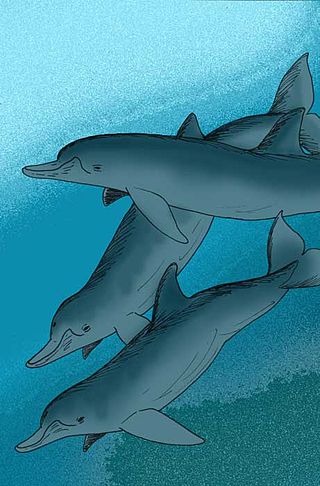
Nightjars are medium-sized nocturnal or crepuscular birds in the family Caprimulgidae and order Caprimulgiformes, characterised by long wings, short legs, and very short bills. They are sometimes called goatsuckers, due to the ancient folk tale that they sucked the milk from goats, or bugeaters, their primary source of food being insects. Some New World species are called nighthawks. The English word "nightjar" originally referred to the European nightjar.

The skuas are a group of predatory seabirds with seven species forming the genus Stercorarius, the only genus in the family Stercorariidae. The three smaller skuas, the Arctic skua, the long-tailed skua, and the pomarine skua, are called jaegers in North American English.

Nothofagus, also known as the southern beeches, is a genus of 43 species of trees and shrubs native to the Southern Hemisphere in southern South America and east and southeast Australia, New Zealand, New Guinea, and New Caledonia. The species are ecological dominants in many temperate forests in these regions. Some species are reportedly naturalised in Germany and Great Britain. The genus has a rich fossil record of leaves, cupules, and pollen, with fossils extending into the late Cretaceous period and occurring in Australia, New Zealand, Antarctica, and South America.

Claytosmunda is a genus of fern. It has only one extant species, Claytosmunda claytoniana, the interrupted fern, native to Eastern Asia, Eastern United States, and Eastern Canada.

The Cribrilinidae family is a part of the suborder Ascophora within the bryozoans. They are characterized by numerous spinose ribs (costae) overarching the frontal membrane of each zooid.

Australodelphis mirus is an extinct Pliocene dolphin. A. mirus is known from fossils found in the Sørsdal Formation, Mule Peninsula, Vestfold Hills, East Antarctica. The genus has been described as an example of convergent evolution with beaked whales.
Geminigera /ˌdʒɛmɪnɪˈdʒɛɹə/ is a genus of cryptophyte from the family Geminigeraceae. Named for its unique pyrenoids, Geminigera is a genus with a single mixotrophic species. It was discovered in 1968 and is known for living in very cold temperatures such as under the Antarctic ice. While originally considered to be part of the genus Cryptomonas, the genus Geminigera was officially described in 1991 by D. R. A. Hill.

Kombuisia is a genus of dicynodont from Early to Middle Triassic of South Africa and Antarctica. Two species were described for the genus: Kombuisia frerensis (type) and Kombuisia antarctica.
Halicephalobus mephisto is a species of nematode, among a number of other roundworms, discovered by geoscientists Gaetan Borgonie and Tullis Onstott in 2011. It was detected in ore recovered from deep rock fracture water in several gold mines in South Africa 0.9 km (0.56 mi), 1.3 km (0.81 mi), and 3.6 km (2.2 mi) under the surface of the Earth. Onstott said that "it scared the life out of me when I first saw them moving", and explained that "they look like black little swirly things". The finding is significant because no other multicellular organism had ever been detected farther than 2 km (1.2 mi) below the Earth's surface.

Schizoporella is a genus of bryozoans in the family Schizoporellidae.

Fenestrulina is a genus within the bryozoan order Cheilostomatida. It is the only member of the family Fenestrulinidae. It has a world-wide distribution.
Celleporella is a genus of bryozoans belonging to the family Hippothoidae.
Antarctothoa is a genus of bryozoans belonging to the family Hippothoidae.

Disporella is a genus of bryozoans belonging to the family Lichenoporidae.
Lagenicella is a genus of bryozoans belonging to the family Teuchoporidae.
Smittina is a genus of bryozoans belonging to the family Smittinidae.
Notiolofos is an extinct genus of sparnotheriodontid ungulate from the order Litopterna. The animal lived during the Eocene, in modern-day Antarctica. The genus contains two species, N. arquinotiensis, the type species, and N. regueroi.

Tremacyllus is an extinct genus of hegetotheriids. It lived from the Late Miocene to the Late Pleistocene and its fossilized remains were discovered in South America.










